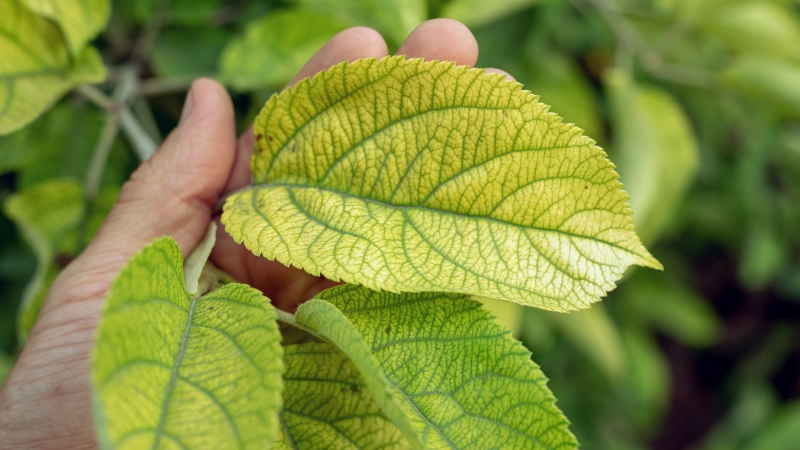Managing Pests At Harvest
Harvest nears, but the crop needs a last pest or disease treatment. There was a time when growers had only two options: Treat the crop with a traditional chemical and risk missing a lucrative market window due to pesticide residue, or not spraying and risk delivering a low-quality crop or losing the crop altogether.
Today’s growers have another option. One of the major benefits of biorational products is that residue management is a non-issue.
Unlike traditional crop protection materials, the active ingredient in most biorational products is derived from biological or natural origins. They are designed to treat a specific pest or disease while having a low impact on non-target living organisms and the environment.
“That’s why we like biopesticides,” says Dr. George Kennedy, professor of entomology at North Carolina State University. “You don’t have (pesticide) residue issues, you don’t have pre-harvest interval issues, and you don’t have worker safety issues.”
Pre-harvest interval is the time set by EPA between when a pesticide is applied and when the workers can safely go back into the field. While the pre-harvest interval for most conventional pesticides is measured in days, the pre-harvest interval for most biopesticides is measured in hours.
“That’s very important for crops like fresh-market vegetables, tree fruit, and fresh-cut flowers,” notes Dr. Alton Sparks, entomologist at the University of Georgia. “Unfortunately, pest management doesn’t drive the growing system, the market does, and growers are trying to get a crop in and out as quickly as possible.”
Dr. Anthony Shelton, professor of entomology at Cornell University, points out that growers are constantly trying to balance their crop protection materials for resistance and residue management. “Generally,” he says, “towards harvest you want to use the safest pesticide you can, one that leaves little or no residue on the plant.”
Using biopesticides near the harvest date helps growers accomplish this goal. “You can apply biorational products like Bacillus thuringiensis (Bt.) in the morning and begin harvesting that afternoon,” points out Dr. Ramon Georgis, global business manager for Valent BioSciences Corp., Libertyville, IL.
To Market, To Market
As if getting a crop out of the field isn’t difficult enough, it must be delivered free of any pesticide residue or within what is called residue toler-ance. This is a major reason for using biopesticides, especially if a crop needs treatment close to harvest. Since biopesticides have very little or no residue, the crop is delivered well within residue limits.
“This is a very big issue for North American growers who export their crops to Europe and Japan,” says Georgis. The same holds true for Mexican, Latin, and South American growers who export produce all over the world.
“The demand for lower residues exists in the U.S., but to a lesser degree than in Europe,” says Dr. Denise Manker, vice president of global development, AgraQuest, Davis, CA. In the United Kingdom the large supermarket chains use “lowest detectable residues” as a competitive marketing tool in their advertising campaigns. “The retailers, especially in the UK, have made the residue issue into a marketing game,” she says, adding, “it hasn’t been taken to the same competitive marketing level in the US, but it’s probably coming.”
While efficacy is most important for growers and resistance management – the ability of biopesticides to extend the life of traditional chemicals — is another key reason for mixing biopesticides into a crop protection program, residue management has become a crucial factor for growers of high-value crops. “Of course efficacy is the number one issue,” says Georges, “but for many growers residue management benefits are becoming more important than resistance management.”
Not All Bugs Are Bad Bugs
An additional benefit of using biopesticides is that they are environmentally friendlier than most conventional products. All unwanted pests have natural enemies, the beneficial insects or so-called good bugs. The good bugs function as pest control agents by preying on unwanted pests.
Many growers spend time and money creating field conditions that will attract beneficial insects.
However, when the unwanted pest population builds to a point where treatment is necessary, conventional pesticides will eliminate the unwanted pests, but the good bugs will fall victim as well. This isn’t the case with biopesticides. They are designed to control a specific pest while doing little damage to the beneficial insects.
“Generally, many of the biopesticides are less toxic to natural enemies,” says Shelton. “You want to conserve those natural enemies and biopesticides are very, very good at that.”
Not only do biopesticides help sustain healthy populations of beneficial insects, they are also non-toxic to wildlife including birds, fish and bees. All growers of high-value crops are in the business to make money by delivering a top-quality crop below residue tolerance. At the same time, growers strive to be good stewards of the land. Biopesticides can be useful tools to help accomplish both goals, especially as harvest nears.








